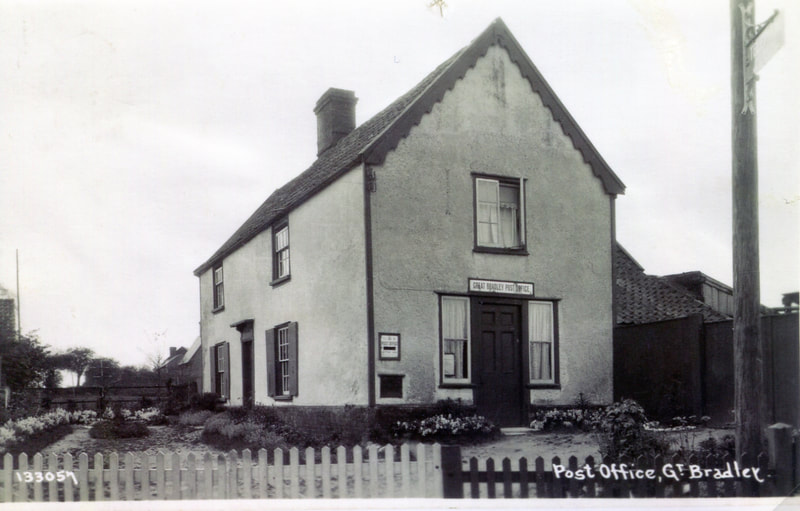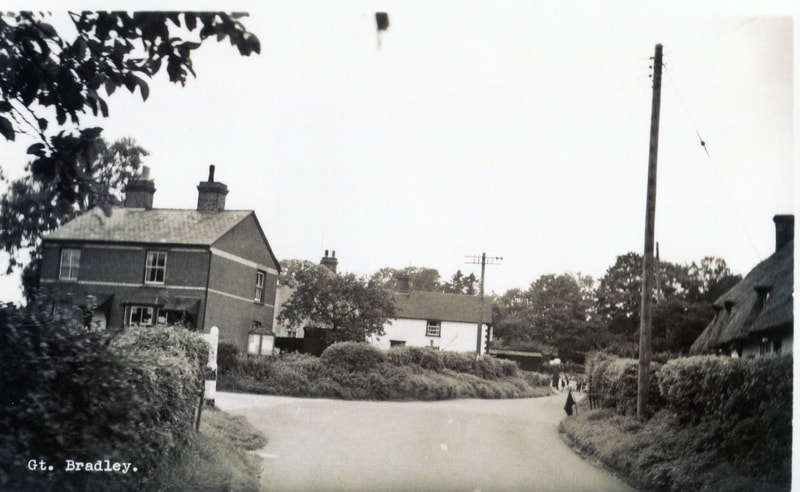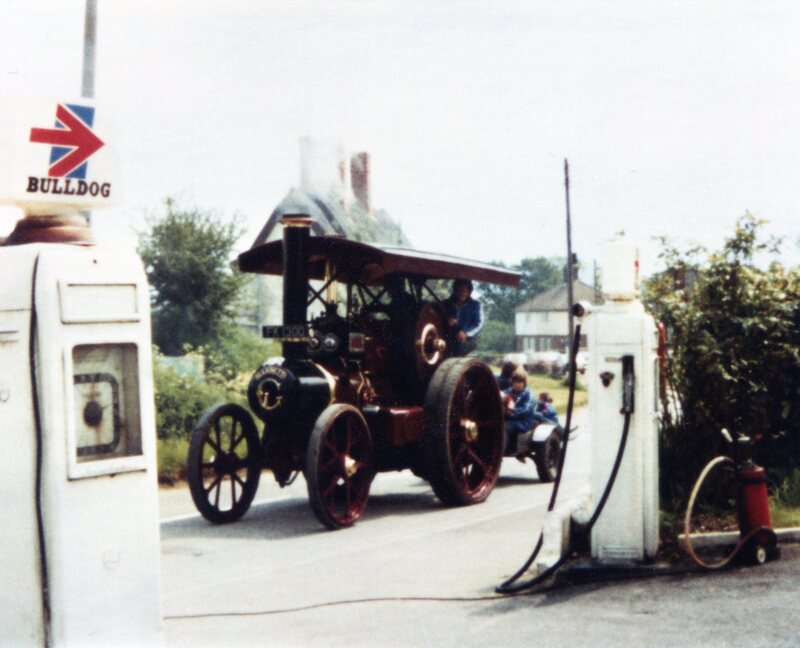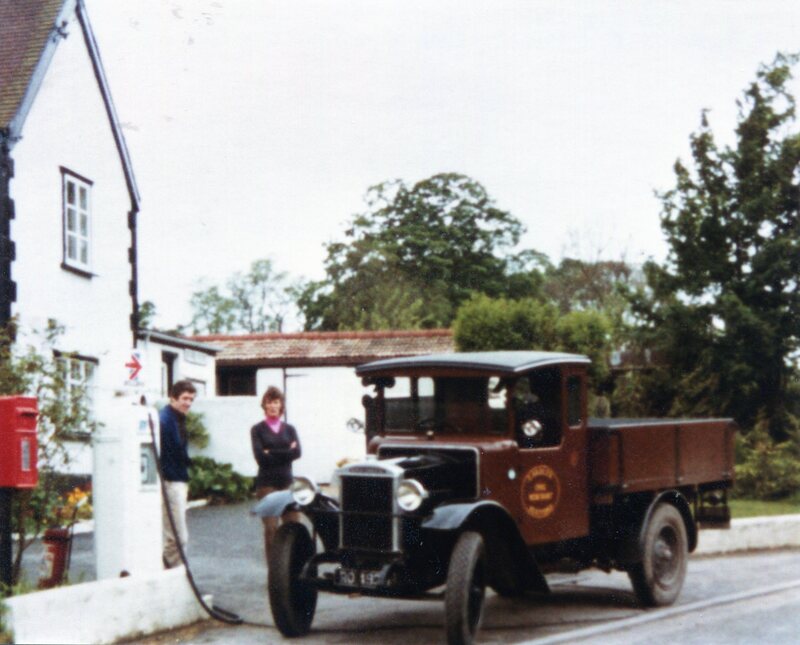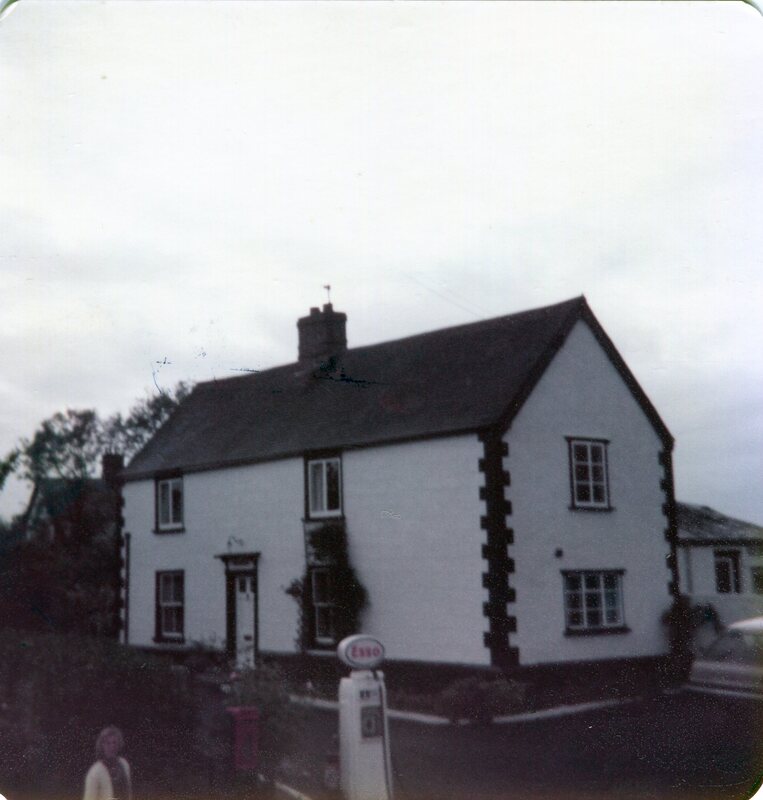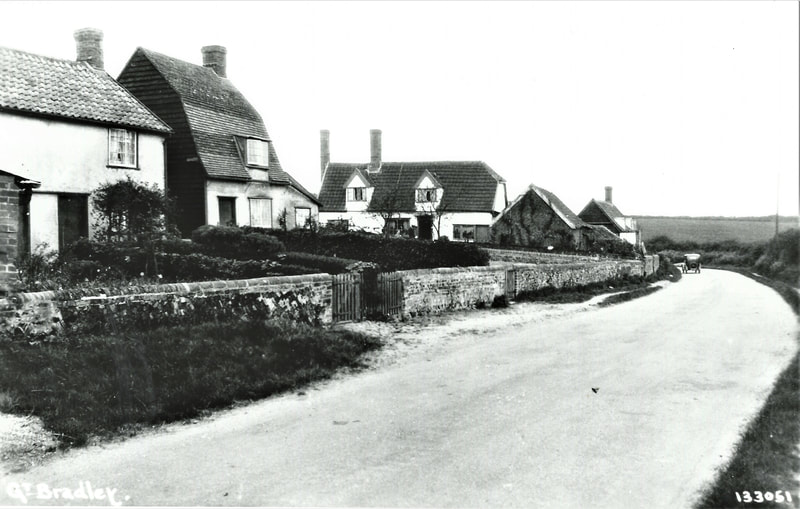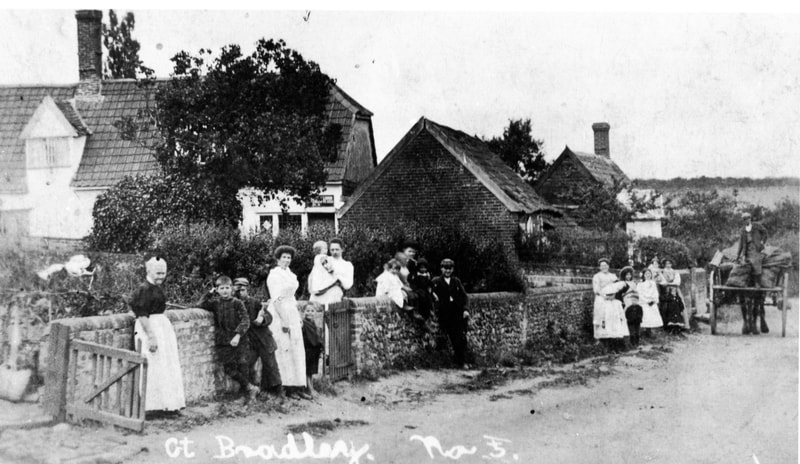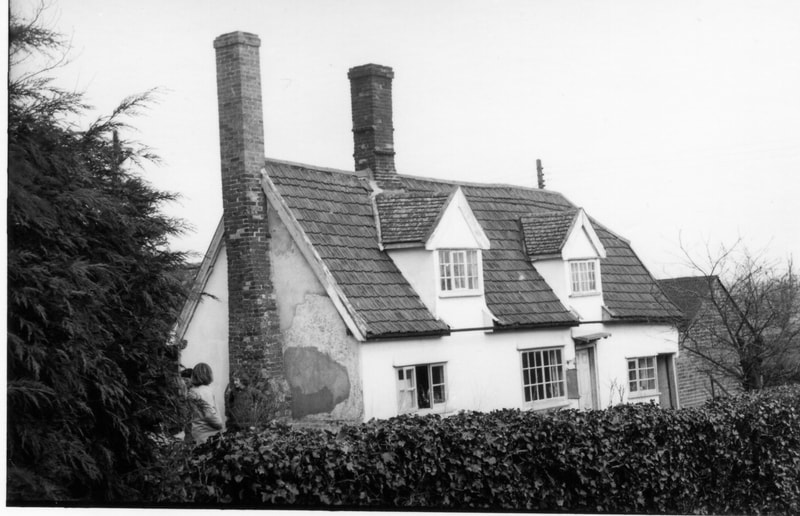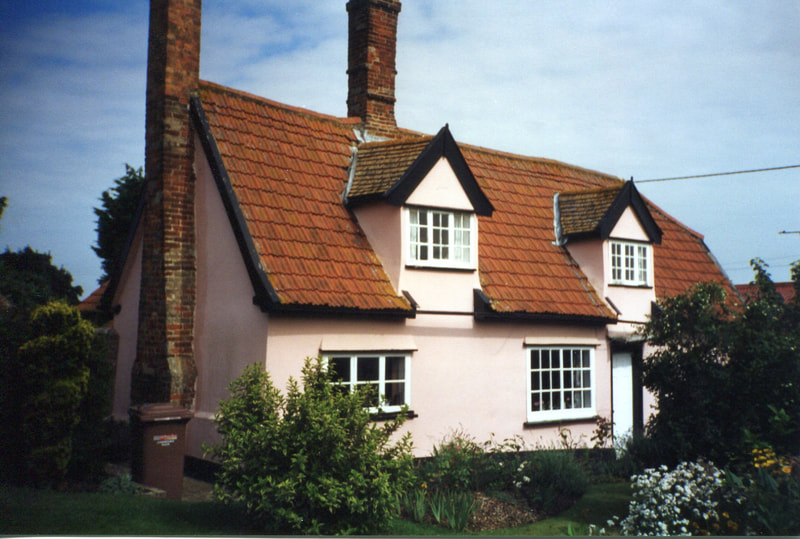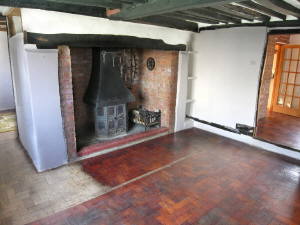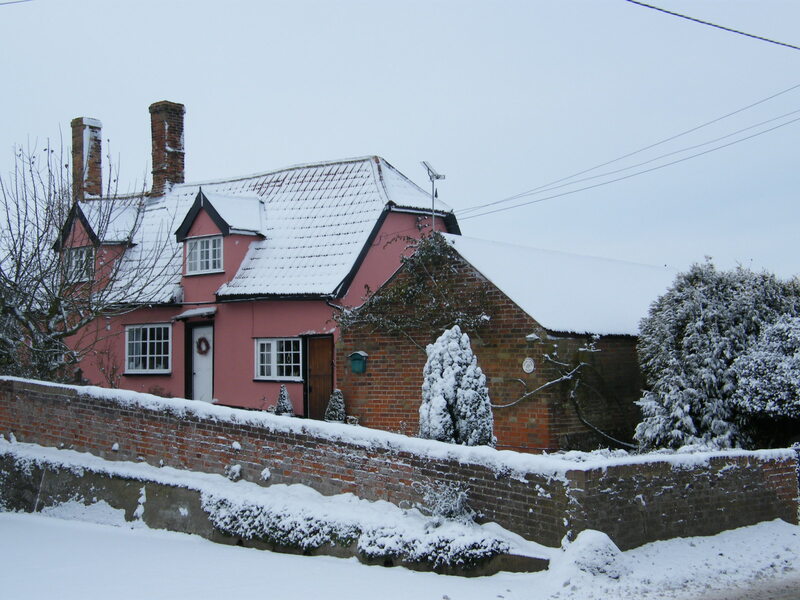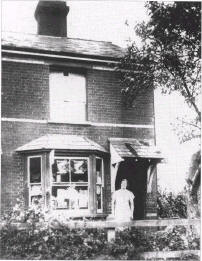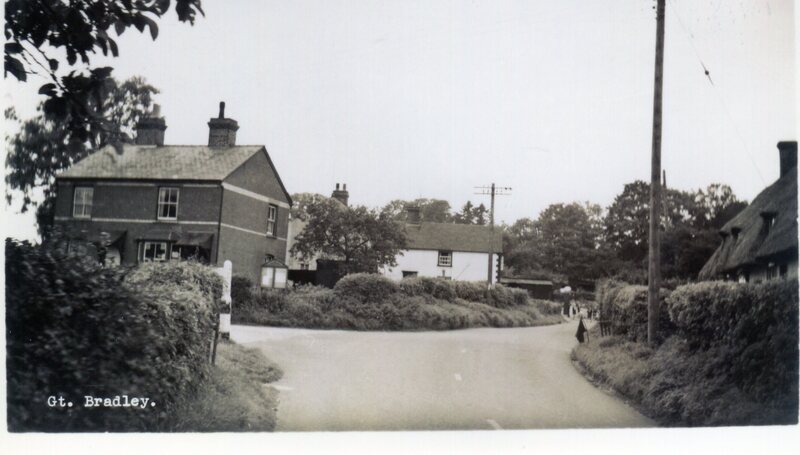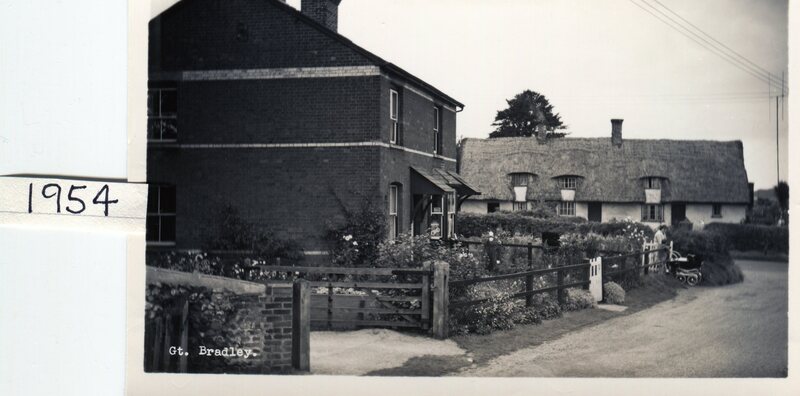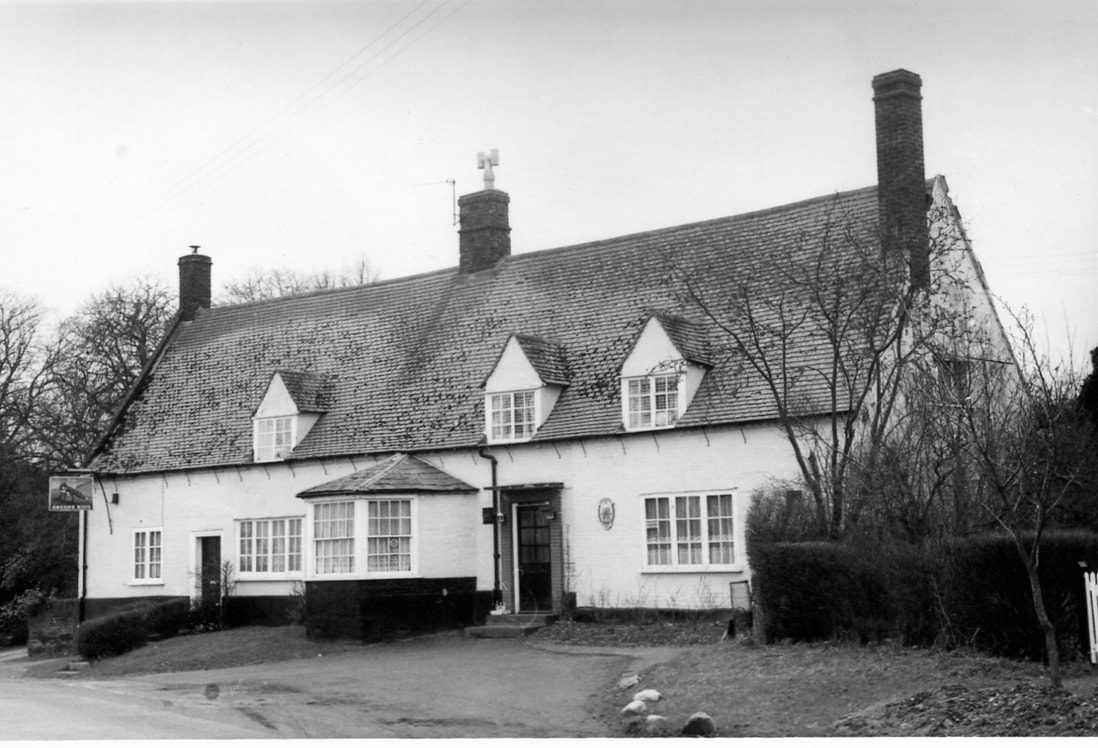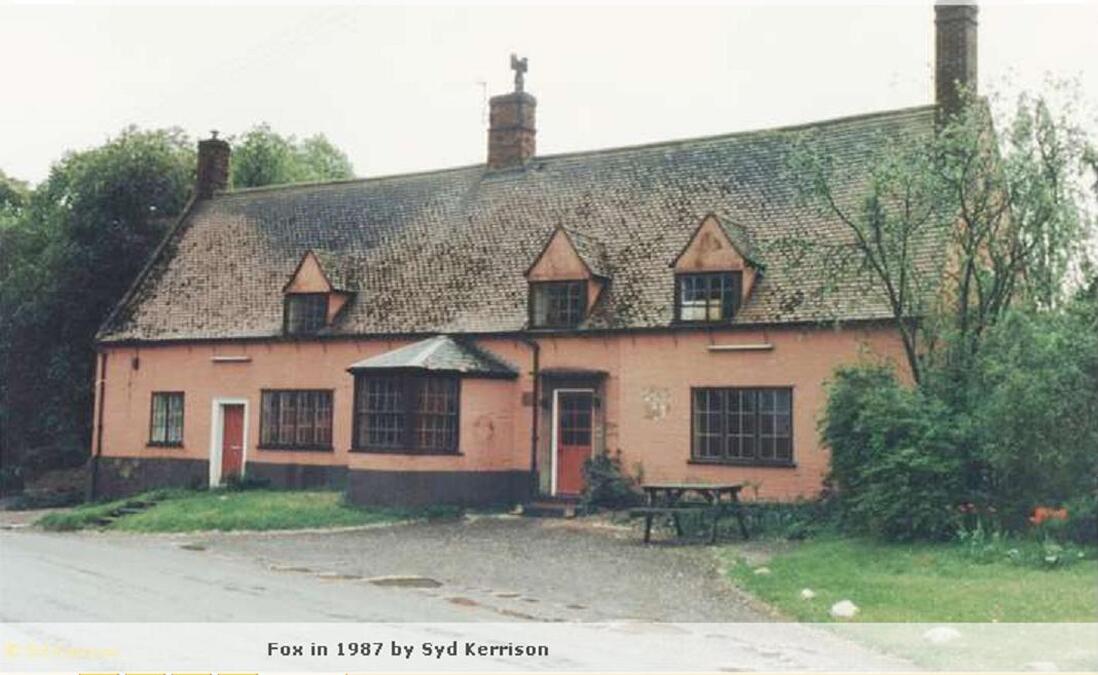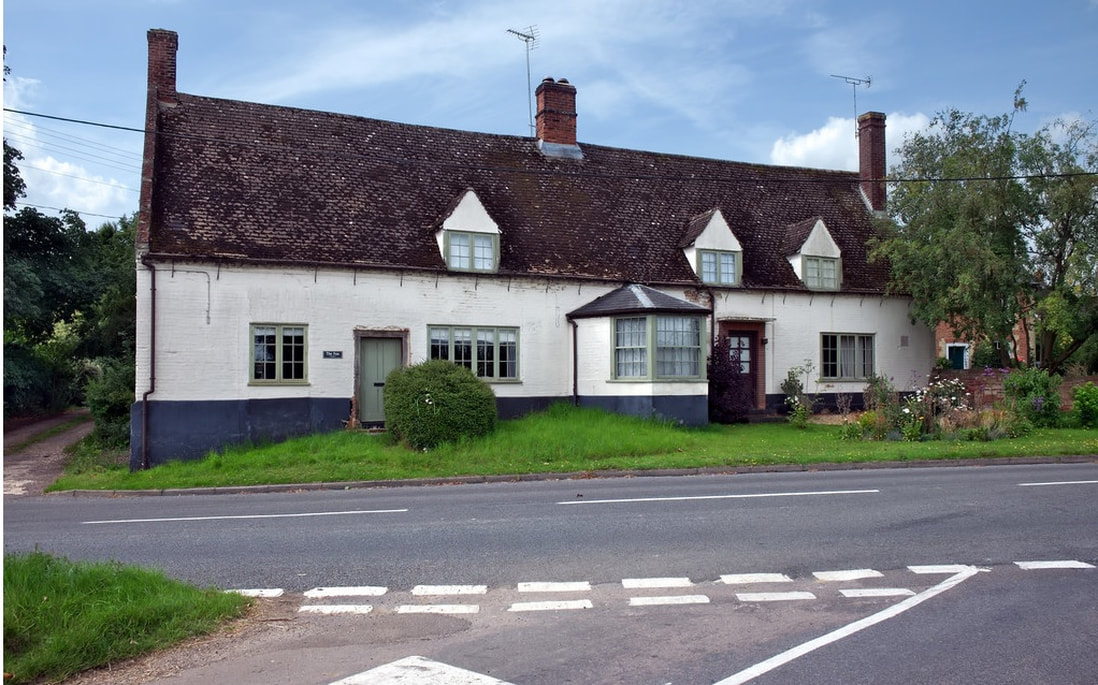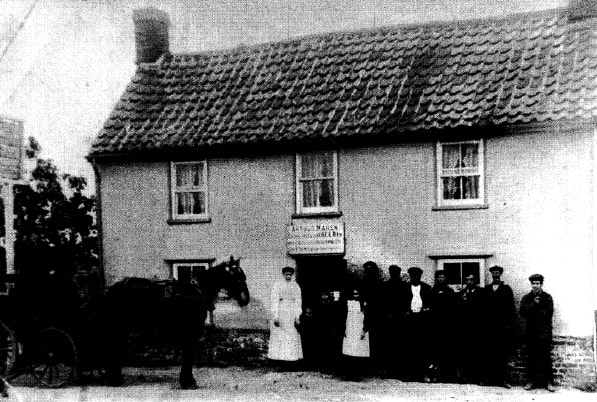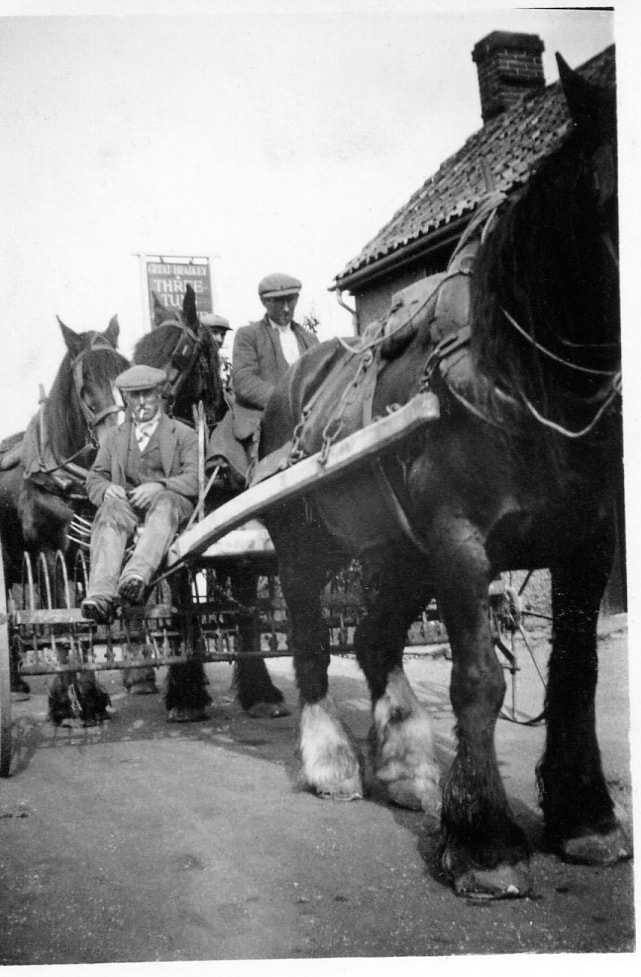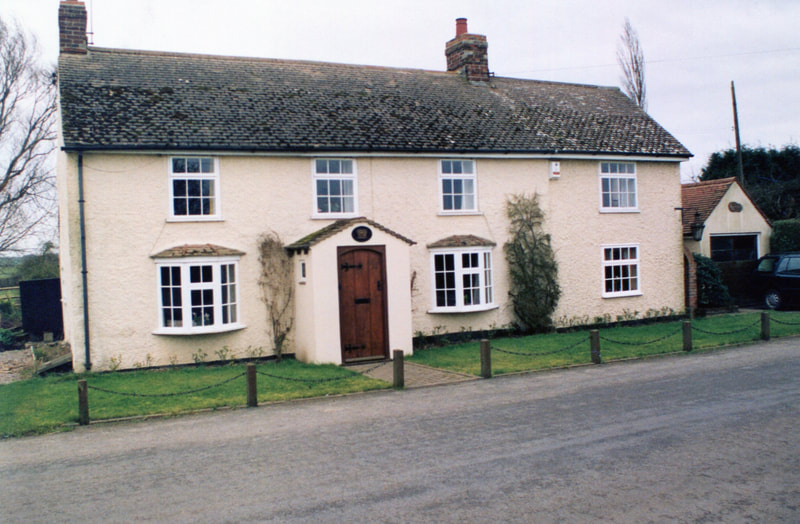SHOPS AND SERVICES
In 1086 At the time of The Domesday Survey there were 14 villagers, 12 smallholders and 6 slaves. Smallholders were reasonably independent farmers, but still owed service to the lord.
By the seventeenth century some mention is made in wills, church records and manor court rolls (the local court business) of occupations: Thomas Fyson was an alehouse keeper and blacksmith; Clement Anderson also a blacksmith; John and Leonard Collier were butchers; the only woman mentioned was Ann Simpson, a spinster and servant. Others were a joiner, cook, bricklayer, two tailors, a shopkeeper and a carbonarius (or charcoal burner).
In 1846, the Victorian era we have much more detail of work. 9 farmers, 2 corn merchants, 2 shopkeepers, 2 beer retailers and an innkeeper were present as well as a wheelwright, carpenter, cooper, miller, brickmaker, bricklayer, tailor, bootmaker and one blacksmith. However, these were the employers, and many had apprentices, labourers or their families working for them.
In 1855 a Post Office is recorded. Joseph Jakeling, who was also a blacksmith, was the sub-postmaster. He lived in the cottage opposite old The Fox Pub. At this time the community was provided for by 1 Innkeeper; 3 Beerhouse keepers (one of whom was a cooper); 1 Surgeon ;1 Rector; together with his Curate;2 Tailors;1 Butcher;1 Horsedealer;1 Blacksmith (who was the sub-postmaster);1 Carpenter;2 Corn merchants;1 Corn miller;1 Shoemaker; 2 Shopkeepers; 1 Bricklayer
The 1891 census gives the occupations of all the villagers, and these range from a doctor, teacher, clergyman and policeman through 6 farmers, 72 farm labourers and 13 other farm workers to 3 shopkeepers, 3 innkeepers, 8 servants, a road labourer, a letter carrier and even a grocer's errand boy.
We know that by 1888, Miss Ellen Plumb was sub-postmistress and grocer, and she and her sister lived at the house still known as the Old Post Office until Miss Emma Plumb died, aged 58, in 1911, having succeeded her sister as postmistress. To find the information recorded in the Kelly's Directory's see the relevant page from the menu.
By 1916, Mrs. A.M. Haylock was sub-postmistress, followed by Mrs. E.H. Lane by 1925. During and since this time, it is believed that the Post Office moved to other houses in the village, including the Crown and Fantails, for a period, but it was transferred again to the Old Post Office from about 1952 when Mr. Jack Chapman was sub-postmaster for a number of years. After Jack died, Mrs. A. Beavis re-opened the Post Office at the Crown House and it remained there until it closed. Mrs. M. Knight was the sub-postmistress after she and her family moved to the Crown House in September, 1976.
The Old Post Office is one of the most picturesque houses in the village. The interior has been renovated and it is pleasing to note that its truly unique feature, the "jack" (an ancient elaborate, wrought-iron 'appliance on which kettles and pans can be lowered over the fire by pulling a lever) remains over the inglenook fireplace and is still in good working order. There is also a pump in the back garden, which worked until recent times
As time has passed and the way of life has changed. Great Bradley has lost its three pubs, all its shops, its post office and its school. There have been many travelling tradesmen, such as the Co-op grocery, a butcher, a tailor, 2 mobile shops for paraffin and hardware, and a baker (who delivered at midnight!) There were 3 different fish and chip vans and 2 ice cream deliverers, as well as a daily milkman - but now this long list is reduced to milk, bread, greengrocery and newspaper deliveries. Almost every resident now leaves the village to work.
Click on the pictures below for a larger image
By the seventeenth century some mention is made in wills, church records and manor court rolls (the local court business) of occupations: Thomas Fyson was an alehouse keeper and blacksmith; Clement Anderson also a blacksmith; John and Leonard Collier were butchers; the only woman mentioned was Ann Simpson, a spinster and servant. Others were a joiner, cook, bricklayer, two tailors, a shopkeeper and a carbonarius (or charcoal burner).
In 1846, the Victorian era we have much more detail of work. 9 farmers, 2 corn merchants, 2 shopkeepers, 2 beer retailers and an innkeeper were present as well as a wheelwright, carpenter, cooper, miller, brickmaker, bricklayer, tailor, bootmaker and one blacksmith. However, these were the employers, and many had apprentices, labourers or their families working for them.
In 1855 a Post Office is recorded. Joseph Jakeling, who was also a blacksmith, was the sub-postmaster. He lived in the cottage opposite old The Fox Pub. At this time the community was provided for by 1 Innkeeper; 3 Beerhouse keepers (one of whom was a cooper); 1 Surgeon ;1 Rector; together with his Curate;2 Tailors;1 Butcher;1 Horsedealer;1 Blacksmith (who was the sub-postmaster);1 Carpenter;2 Corn merchants;1 Corn miller;1 Shoemaker; 2 Shopkeepers; 1 Bricklayer
The 1891 census gives the occupations of all the villagers, and these range from a doctor, teacher, clergyman and policeman through 6 farmers, 72 farm labourers and 13 other farm workers to 3 shopkeepers, 3 innkeepers, 8 servants, a road labourer, a letter carrier and even a grocer's errand boy.
We know that by 1888, Miss Ellen Plumb was sub-postmistress and grocer, and she and her sister lived at the house still known as the Old Post Office until Miss Emma Plumb died, aged 58, in 1911, having succeeded her sister as postmistress. To find the information recorded in the Kelly's Directory's see the relevant page from the menu.
By 1916, Mrs. A.M. Haylock was sub-postmistress, followed by Mrs. E.H. Lane by 1925. During and since this time, it is believed that the Post Office moved to other houses in the village, including the Crown and Fantails, for a period, but it was transferred again to the Old Post Office from about 1952 when Mr. Jack Chapman was sub-postmaster for a number of years. After Jack died, Mrs. A. Beavis re-opened the Post Office at the Crown House and it remained there until it closed. Mrs. M. Knight was the sub-postmistress after she and her family moved to the Crown House in September, 1976.
The Old Post Office is one of the most picturesque houses in the village. The interior has been renovated and it is pleasing to note that its truly unique feature, the "jack" (an ancient elaborate, wrought-iron 'appliance on which kettles and pans can be lowered over the fire by pulling a lever) remains over the inglenook fireplace and is still in good working order. There is also a pump in the back garden, which worked until recent times
As time has passed and the way of life has changed. Great Bradley has lost its three pubs, all its shops, its post office and its school. There have been many travelling tradesmen, such as the Co-op grocery, a butcher, a tailor, 2 mobile shops for paraffin and hardware, and a baker (who delivered at midnight!) There were 3 different fish and chip vans and 2 ice cream deliverers, as well as a daily milkman - but now this long list is reduced to milk, bread, greengrocery and newspaper deliveries. Almost every resident now leaves the village to work.
Click on the pictures below for a larger image
